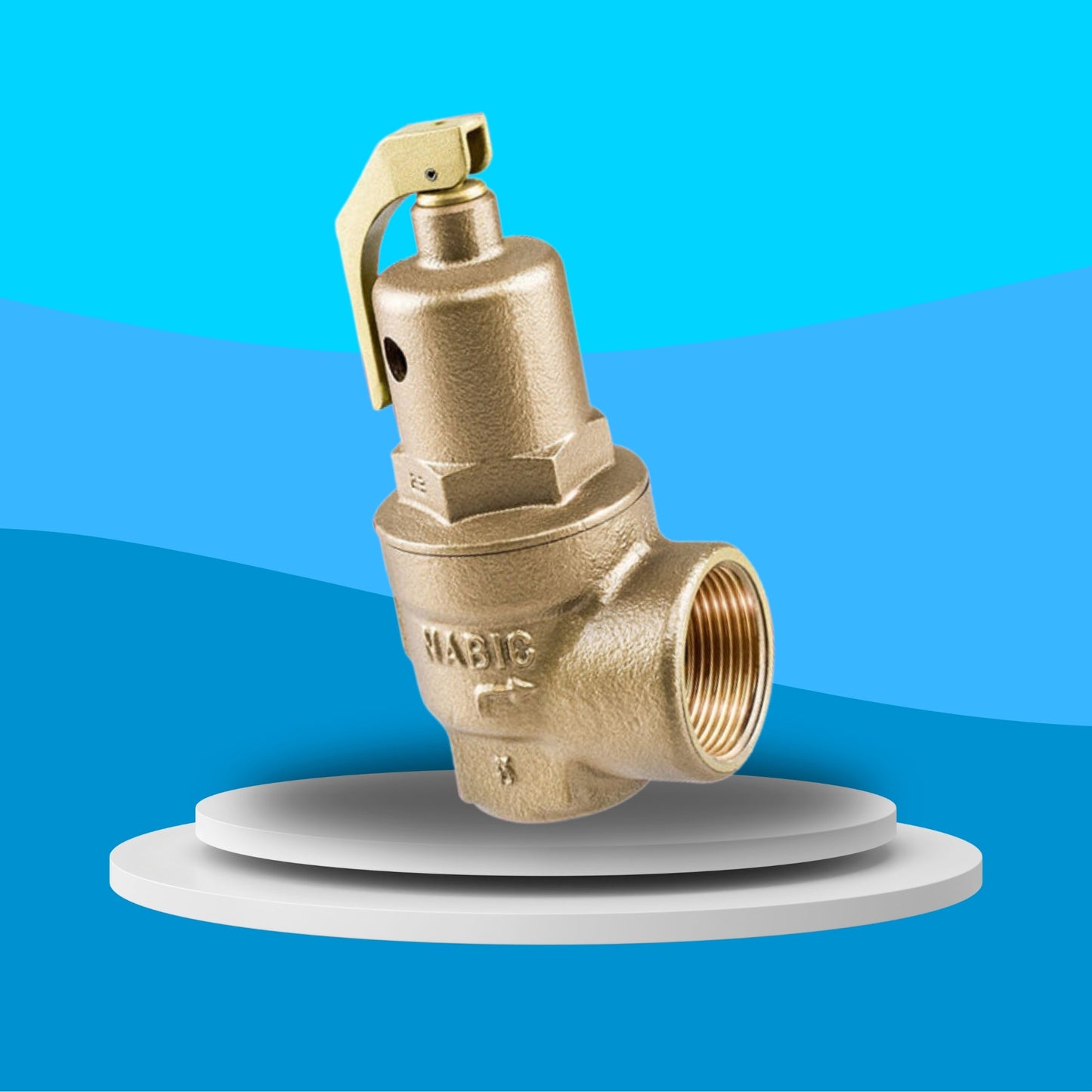Wras Valves
Wras Approved Bronze Saftey Relief Valve BSPP (With Test Lever)
Wras Approved Bronze Saftey Relief Valve BSPP (With Test Lever)
Couldn't load pickup availability
The WRAS Approved Bronze Safety Relief Valve BSPP with Test Lever is engineered for reliable overpressure protection in a wide range of water and process systems. Manufactured from high-grade bronze and fitted with a durable PTFE seat, this valve is designed to maintain tight shut-off performance while providing consistent, safe pressure relief when required. Its BSPP (British Standard Pipe Parallel) screwed end connections make for simple installation in compatible pipelines and systems, while the cap top design with test lever allows for easy manual testing and compliance checking.
Ideal for potable water applications, the valve’s WRAS (Water Regulations Approval Scheme) certification ensures it meets strict UK water industry standards for safety and hygiene. The test lever enables on-site functionality checks without disrupting system operation, which is crucial for routine maintenance or verification. With excellent resistance to corrosion and a wide operating temperature range of -20°C to 195°C, this safety relief valve is suitable for both cold and hot water services, as well as compatible fluids in low to medium-pressure systems.
WV - 1542
Share

FAQ's
What is the difference between a valve and an actuator?
What types of actuators are available?
The main types of actuators are:
Pneumatic actuators – use compressed air for fast, reliable operation.
Electric actuators – use electrical power for precise control.
Hydraulic actuators – use fluid pressure for high-torque applications.
Each type offers unique advantages depending on the environment, media, and system control needs.
How do I choose the right actuator for my valve?
To select the correct actuator, consider:
Valve type and torque requirement
Power source available (air, electric, or hydraulic)
Operating environment (temperature, humidity, hazardous area)
Control signal type (on/off or modulating)
Matching actuator torque and compatibility with the valve’s ISO mounting ensures reliable performance.
What are the main types of valves used in automation?
The most common valves in automated systems include:
Ball valves – for tight shutoff and quick operation.
Butterfly valves – for larger flow control with compact design.
Globe valves – for precise throttling and flow regulation.
Check valves – to prevent backflow.
Gate valves – for full bore flow isolation.
What’s the difference between a double-acting and spring-return actuator?
Double-acting actuators use air (or power) to both open and close the valve.
Spring-return actuators use air to open (or close) the valve, and a built-in spring to automatically return it to a safe position when power or air is lost — ideal for fail-safe operation.
How often should valves and actuators be serviced?
Regular maintenance intervals depend on operating conditions, but a good rule of thumb is to inspect every 6–12 months.
This includes checking for leaks, lubrication, seal wear, and actuator responsiveness to prevent unexpected downtime.

